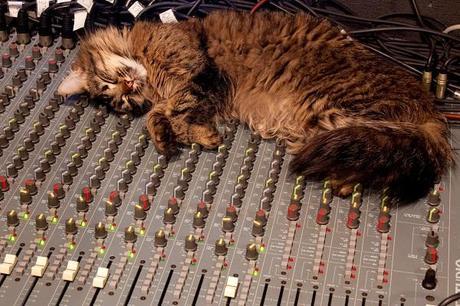Written By: Jacob Morris
‘Muddy’ is a derogatory term for sounds that have a lot of low frequency content in them, roughly in the under 200Hz area, and ought not to. The reason for this is that instruments have to compete for space in this range much more than in others, so extra care has to be taken to ensure everything fits. A bassline and a kick drum can quickly become indistinguishable if muddy sounds are left untreated.

Before I discuss solutions, there’s something I want to make clear first: there is nothing inherently wrong with the sound of these low frequencies, but context is important. While a full, warm grand piano might sound fantastic on its own, it could cause chaos in a full mix. Such things should always be considered, which brings me to first way to address muddy sounds.
Arrangement and sound selection
Ideally for a good sense of clarity, there should only be a couple of distinct things going on in the low end. If, for example, you have a nice, low warm pad sound that’s making the bassline and kick a little too cluttered, try moving it up an octave or changing to a brighter patch to clear some room.
“A popular trick in certain subgenres of dance music for a tight low end is to have the kick and bassline play different rhythms…”
A popular trick in certain subgenres of dance music for a tight low end is to have the kick and bassline play different rhythms; a simple version of this is a utilizing a four-on-the-floor beat for the kick and having the bassline exist solely between those beats. It makes for a nice separation.
Equalization
In a busy mix with lots of instruments, whether recorded or synthesized, there will undoubtedly be some noise or other unwanted mud there despite your best efforts in arrangement. Not to worry, as you can EQ a lot of this out by using a high pass filter.
The goal should generally be a somewhat thinner sound, but not too processed. You won’t need to exercise much caution with cymbals or hats as you can easily cut below 200Hz without affecting the tone, but for sounds in the mid-range, you need to compromise between giving the low end room and retaining the timbre of the instrument.
You may also wish to use a low shelf filter in some cases for a bit more control.
Audio Ducking
Sidechain ducking is a technique used to great effect in modern dance music. It’s also known as sidechain compression, but that can be confused with parallel compression, a whole different thing, so I’ll stick with the unambiguous term.

Ducking refers to using a sound to trigger a sudden reduction in the volume of another, and then to go back to the original volume once the sound has ended. Essentially, the targeted track ducks around the sample.
By linking multiple elements to a sound to be ducked, you can give it anywhere from a little boost in clarity to a huge pumping effect, though if you just want to make something stand out a little, it’s best to use the previous techniques first because ducking can become obnoxious if used too intensely.
